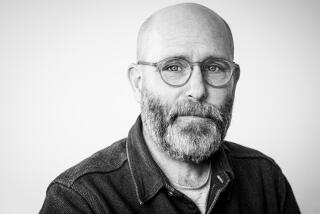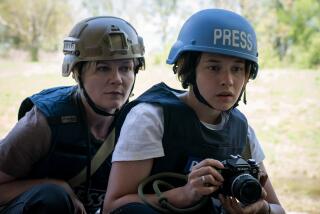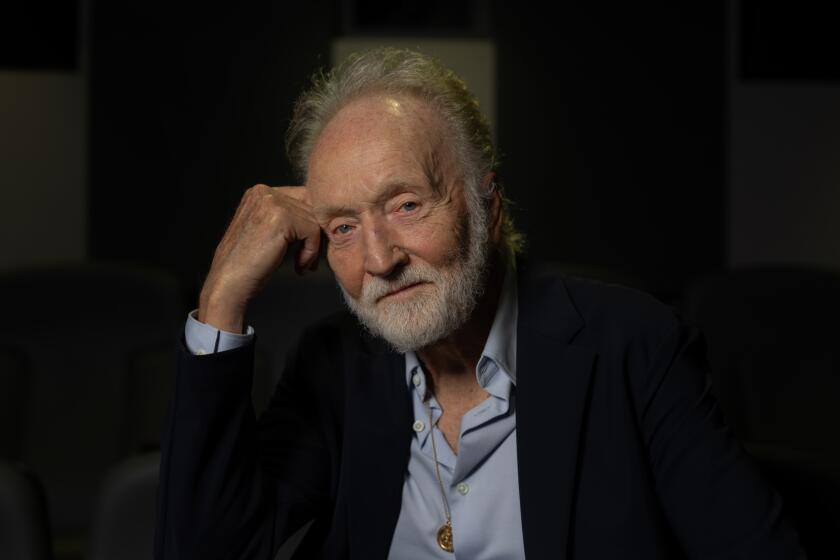Review: ‘Underfire: The Untold Story of Pfc. Tony Vaccaro’ reveals the intimate relationship between a war photographer and war itself
“If your photographs aren’t good enough,” celebrated war photographer Robert Capa famously said, “you’re not close enough.” And no one got closer to the action in World War II than Tony Vaccaro.
As detailed in the engrossing, unexpectedly moving documentary “Underfire: The Untold Story of Pfc. Tony Vaccaro,” that happened because Vaccaro was not a photographer assigned to a combat unit.
Rather he was a front-line combat infantryman who fought across Europe with the Army’s 83rd Infantry Division from the Normandy invasion to the war’s end, invariably with a camera hung around his neck.
Vaccaro didn’t just snap the occasional image; over the course of nearly a year in combat he took some 8,000 photographs. Standing out in an era when staged photographs were acceptable, his vivid, candid work showed the war as it was actually experienced by the men who were doing the fighting.
“I was determined to record everything,” is how he describes his motives, and he just about did.
Still an active and focused observer at age 93, with a remarkable memory for details, Vaccaro in person is at the documentary’s center, taking director Max Lewkowicz with him as he retraces his footsteps across Europe.
More than that, the photographer offers both poignant reminiscences of his 272 days in combat and thoughtful observations about the nature of war and what it does to human beings, including this comment about what it took to take the toughest of those pictures: “You have to be cold-blooded, you have to be a son of a bitch.”
Orphaned at age 6, Vaccaro says he learned about the importance of survival at an early age. Raised by an uncle who was a great hunter, he learned as well the importance of timing, of the decisive moment: “a little longer, there is no picture anymore, half a second later the picture is gone.”
Drafted into the Army two months after his high school graduation, Vaccaro, already a budding photographer, wanted to join the Signal Corps, only to be turned down for being too young.
Incensed that he was old enough to kill but too young to take photographs, Vaccaro determined to take pictures himself, to “show them I could do it better.” And he pretty much did.
As New York Times photographer James Estrin points out, Vaccaro had an advantage that extended beyond the entree his combat status gave him.
The camera he used for the entire war, an Argus C3 he purchased for $47.50, was smaller than the unwieldy Speed Graphic models the Signal Corps shooters employed. And because it was a 35-mlllimeter range-finder camera, Estrin says, Vaccaro could “react very quickly and shoot what he was seeing.”
Young and naive enough to believe he could find a functioning camera shop on the European front to develop his negatives, Vaccaro was fortunate in discovering a shop that had been badly shelled.
Picking through the ruins, he found the chemicals he needed and developed the film himself in four Army helmets, hanging the negatives on nearby trees.
The strongest moments in “Underfire” come when Vaccaro tells the stories behind some of his best known photographs, like “The Last Step of Pvt. Jack Rose,” praised by curator Anne Wilkes Tucker as one of the very few war photographs to capture the actual moment of death.
“Suddenly, life comes to an end and gravity takes you,” Vaccaro says, remembering what he saw more than once. “Regrettably giving up life, we all go down to earth again, all of us.”
By the time the war ended, Vaccaro had seen more than enough of the brutality of combat. He became a professional photographer, but he never shot another war photo, giving all his negatives to his sister to store and not dealing with them for decades.
“It makes you a beast, I became a killer, that’s a terrible thing for a human being to have on his shoulders” he says movingly of his combat time. “The faces of people you killed, the friends who died, they don’t leave you alone. It took me years to overcome that.
“It was necessary for me to be evil for 272 days, but not forever.”
No MPAA rating.
Running time: 1 hour, 21 minutes.
Playing Laemmle Playhouse 7, Pasadena.
See the most-read stories in Entertainment this hour »
Movie Trailers
More to Read
Only good movies
Get the Indie Focus newsletter, Mark Olsen's weekly guide to the world of cinema.
You may occasionally receive promotional content from the Los Angeles Times.











